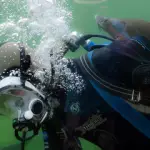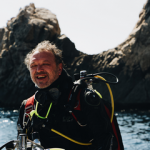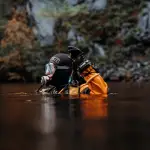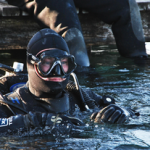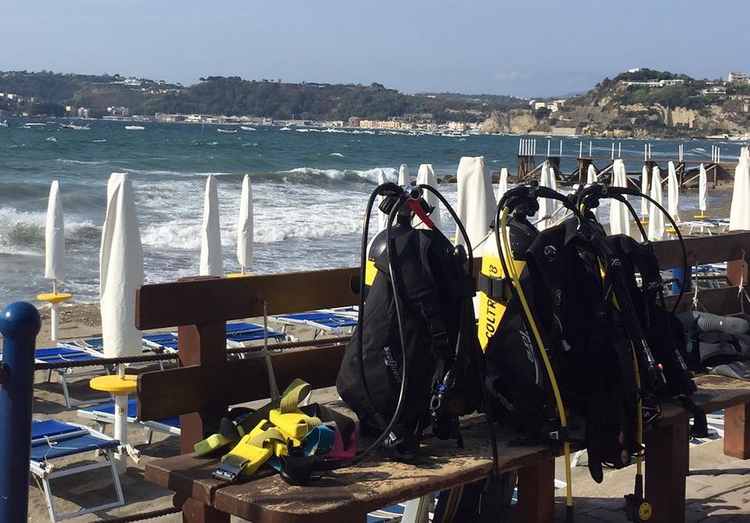
You maybe exploring the idea of drysuit diving for the first time and wondering if you need a BCD with a drysuit or not. A BCD is not just used for buoyancy, which is why it’s important to understand why you need a BCD when diving in a drysuit.
The best way to do more diving is to book yourself on a scuba diving liveaboard. You can check the latest and best deals on liveaboards using the following window:
Do you use a BCD with a drysuit?
Not all divers actually use a BCD when diving in a drysuit, but they still need one to attach their diving tanks to their back. Some drysuit divers prefer to use their drysuit for buoyancy vs their BCD. Whereas other drysuit divers prefer to use their BCD for buoyancy, whilst adding only sufficient air to the drysuit to prevent drysuit squeeze.
But in both cases, drysuit divers dive with a BCD.
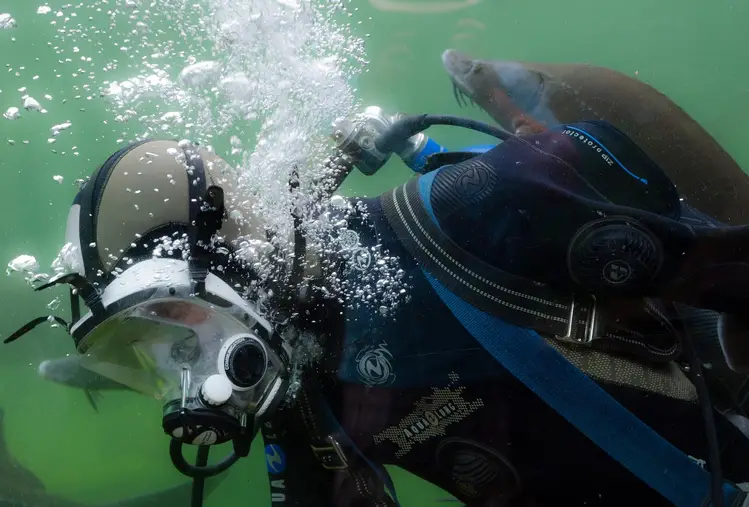
When you are diving in a drysuit you still need a BCD for the following reasons:
- To attach your scuba tank to your back.
- For buoyancy when you first enter the water.
- As an alternative buoyancy control device to using your drysuit for buoyancy.
- As a tech diver with heavy equipment.
- Can be used as an emergency backup.
- For buoyancy at the end of your dive when you surface.
1. Your BCD is used to attach your scuba tank to your back
You need a buoyancy control device (BCD) with a drysuit to attach your diving tank to your back. Without some form of BCD, you won’t have anything to attach your scuba air tank to you, unless you are diving on a rebreather that uses a bladder.
2. You should use your BCD for buoyancy when you first enter the water
You need a BCD with a drysuit, as it’s far better to use your BCD for buoyancy when you first enter the water diving from a dive boat. It’s far easier and quicker to vent air from a BCD when leaving the surface to descend than it is to expel air from a drysuit.
Pro diver tip. When you inflate your BCD at the surface use your breath rather than air from your dive tank. This will conserve as much of the air in your tank for the dive itself so you get as much time underwater as possible.
3. Your BCD is an alternative buoyancy control device to using your drysuit for buoyancy
Some scuba divers need a BCD with a drysuit, as they prefer to use their BCD for buoyancy control instead of using their drysuit.
But they will still need to add air to their drysuit as well to avoid drysuit squeeze, which means they end up using both their BCD and drysuit for buoyancy.

4. As a tech diver with heavy equipment
Tech divers need a BCD with a drysuit as they often prefer to use their BCD or bladder for buoyancy rather than using their drysuit. This is because they tend to have more heavy diving equipment and prefer to not put too much air in their drysuit.
5. Your BCD can be used as an emergency backup
If you have a problem with the air inflator on your drysuit, you have your BCD as a backup buoyancy control device instead.
6. For buoyancy at the end of your dive when you surface
You need a BCD with a drysuit for the end of your dive when you surface for buoyancy. You can also add air to your drysuit on the surface too for added buoyancy and warmth.
How do you dive with a drysuit?
The key thing about diving in a drysuit is that it doesn’t let water in. Which means you should remain dry when diving in a drysuit. The following points should be noted about how do you dive with a drysuit:
- You will be more buoyant when diving in a drysuit, as you have an air-pocket inside the suit that adds to your buoyancy. This means you will need to add more weights when switching from diving in a wetsuit to diving in a drysuit.
- You need to be careful with your neck and wrist seals when putting on your drysuit to avoid damaging these. A damage neck or wrist seal will leak underwater and make the drysuit unusable.
- If you buy a drysuit with a back-zip you will need a dive buddy to zip the suit-up for you. You need to make sure the zip is fully fastened to avoid a leaking zip underwater.
- Perform a knee bend and squeeze the suit to empty as much of the air in your drysuit before you dive. This avoids having excess buoyancy at the start of your dive so you can use your BCD for buoyancy on the surface.
- You have an air-inflator valve to add air to your drysuit, which is in addition to your BCD inflator. It is this inflator you use to add air to your drysuit as you descend, instead of using your BCD.
- Your drysuit also has exhaust valves that are used to vent air on your ascent. If you have also used your BCD you will need to purge your BCD of air as you ascend to the surface to avoid a fast ascent.
I hope you enjoyed this article about do you need a BCD with a drysuit
I’d love to hear from you. Tell us about your adventures of diving and snorkeling, in the comments below. Please also share your photos. Either from your underwater cameras or videos from your waterproof go-pro’s!
If this article hasn’t answered all of your questions. If you have more questions either about snorkeling or scuba diving (or specifically about do you need a BCD with a drysuit), please comment below with your questions.
There will also be many more articles about scuba and scuba diving safety tips (and on snorkeling too) for you to read and learn about this fabulous sport.
Have fun and be safe!

